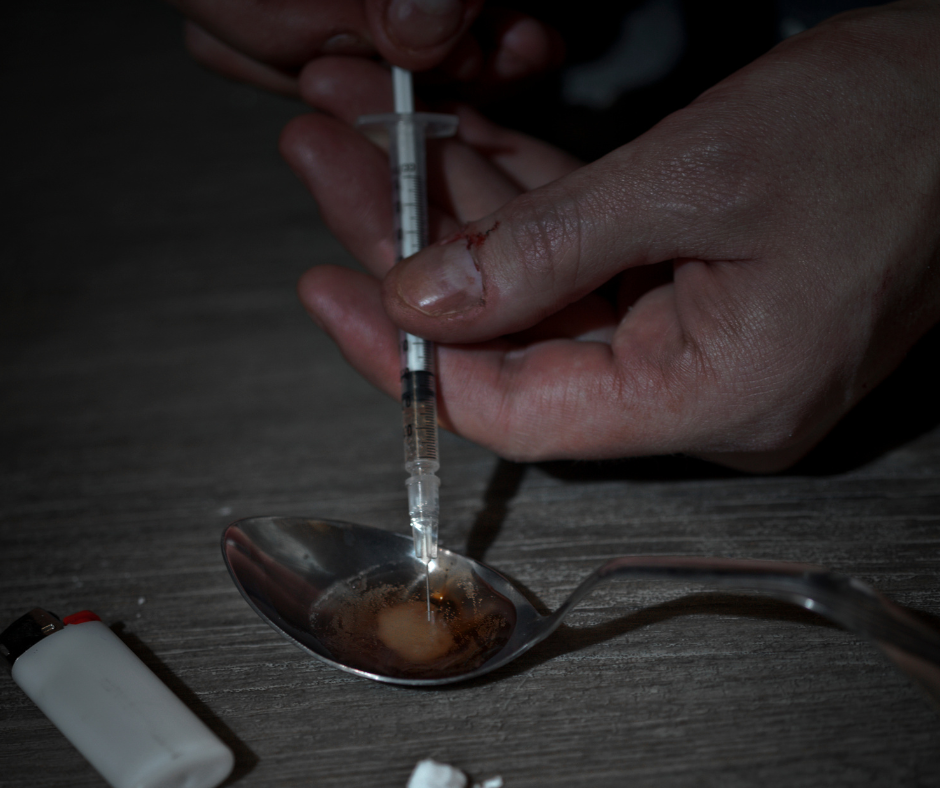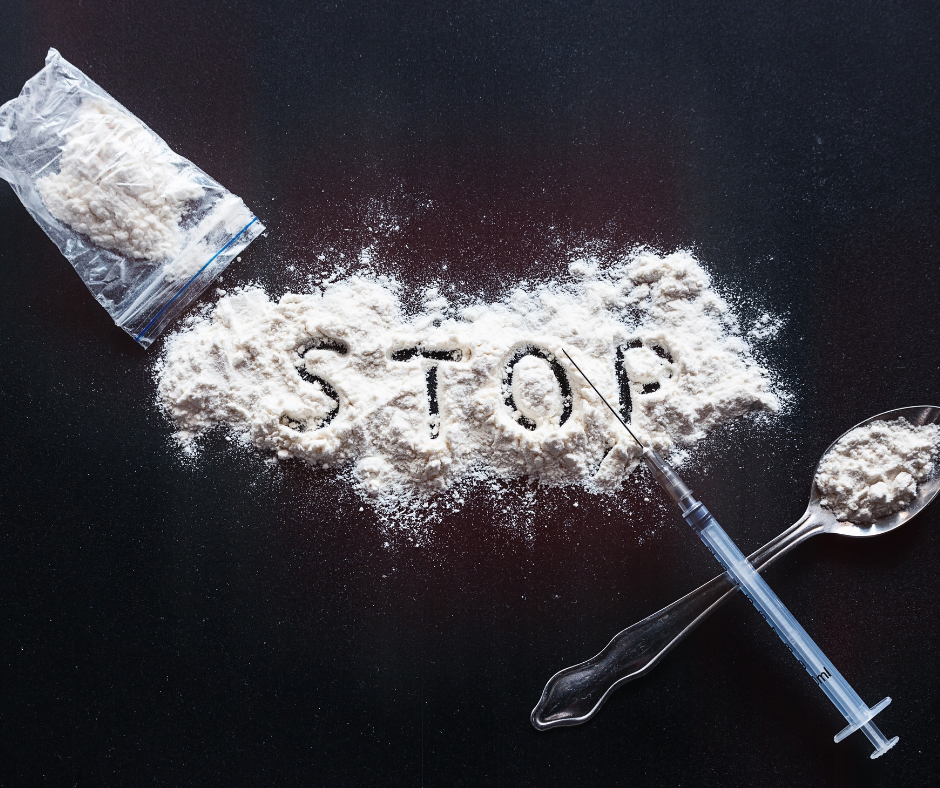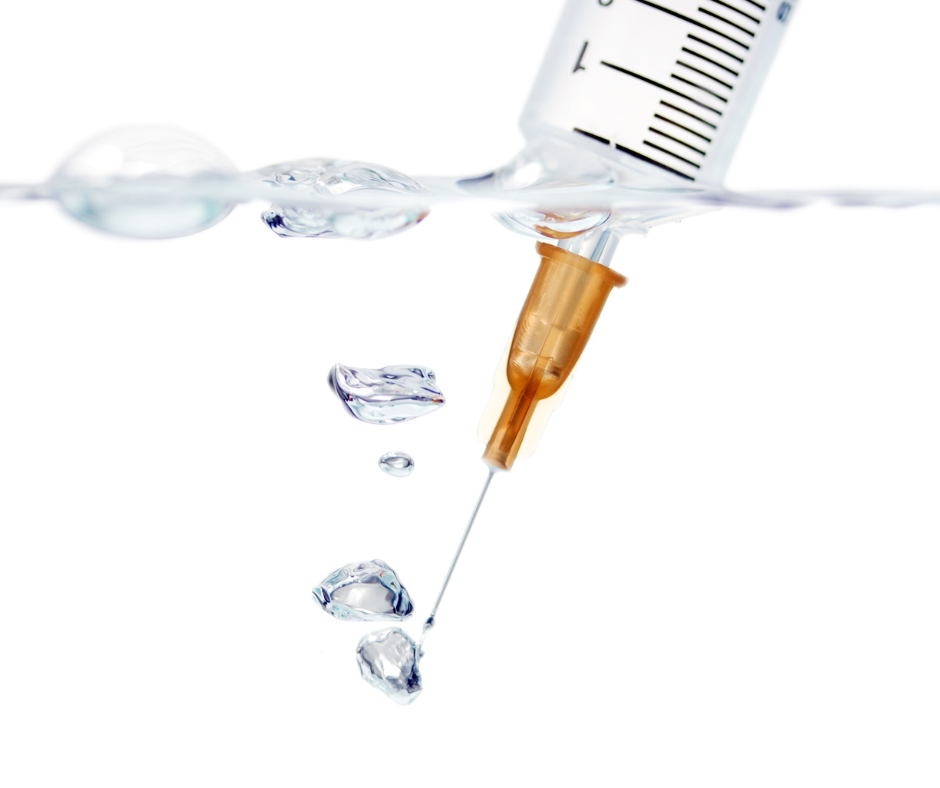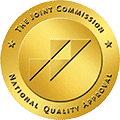Key Takeaway:
- Medications such as opioid agonists, antidepressants, and antipsychotics can be effective in treating xylazine addiction by reducing withdrawal symptoms and cravings.
- Behavioral therapies like cognitive-behavioral therapy, dialectical behavioral therapy, and motivational interviewing have shown positive results in addressing underlying psychological factors contributing to addiction and promoting long-term recovery.
- Both outpatient and inpatient treatment programs are available for xylazine addiction, including detoxification, group therapy, individual counseling, and family therapy, with aftercare options including support groups and relapse prevention strategies.
Struggling with Xylazine addiction? You’re not alone. Learn more about available treatment options designed to help you fight this difficult battle and start the journey to a healthier and more fulfilling life.
Understanding Xylazine Addiction
As someone who has witnessed the devastating effects of Xylazine addiction firsthand, I understand just how important it is to recognize and understand this substance’s addictive potential. In this piece, we’ll be taking a closer look at what Xylazine addiction really is, and its symptoms and causes. We’ll also be discussing how to identify the signs of addiction, and why early detection is crucial for successful treatment. Whether you’re struggling with Xylazine addiction or know someone who is, this section will provide valuable insights into this often-misunderstood disease.
Defining Xylazine Addiction: Symptoms and Causes
Xylazine addiction is a condition where an individual develops a strong dependence on Xylazine, a potent sedative and pain medication commonly used in veterinary medicine. This addiction can have debilitating effects on an individual’s physical and mental health, as well as their social and professional life.
Xylazine works by reducing the activity of the central nervous system to produce a calming effect. Its sedative properties make it useful in managing animal anxiety, aggression, and pain. However, its potency also makes it highly addictive when used in humans. Once an individual becomes addicted to Xylazine, they may experience withdrawal symptoms that can be severe and long-lasting.
Several factors contribute to Xylazine addiction, including genetic predisposition, environmental influences such as peer pressure or traumatic experiences, underlying mental health conditions like depression or anxiety, and chronic pain management. Additionally, illicit drug use such as opioids can increase the likelihood of developing Xylazine addiction.
Few studies have focused on Xylazine addiction specifically due to its status as a veterinary medication. However, there have been documented cases of individuals using Xylazine recreationally or self-medicating for chronic pain management. In one instance in Indiana in 2018, officials reported a significant uptick in drug-related overdoses involving Xylazine.
As I reflect on my own life experiences and those of people around me who have struggled with addictions like Xylazine addiction over time; I find that identifying the signs and symptoms of such addictions needs careful attention to detail before it’s too late.
Identifying Signs and Symptoms of Xylazine Addiction
Identifying Signs and Symptoms of Xylazine Addiction is crucial to understand the effects and severity of this addiction. One must recognize the signs early on to prevent the usage from becoming chronic.
Xylazine is a drug commonly used as a sedative for animals but has recently become popular among drug users due to its dissociative properties. It works by suppressing the central nervous system, leading to a feeling of detachment from reality. This high is what attracts drug users to consume it. The reasons behind its working are still under research, but some experts believe that the drug alters the levels of neurotransmitters in the brain, leading to an increased desire for more of the substance.
If you suspect someone close to you might be suffering from Xylazine addiction or are uncertain about your own addiction, watch out for some common signs and symptoms like trembling, fatigue, depression, nausea, anxiety or aggressive behavior pattern shifts. Some other valuable indications may include appearing drowsy all day long or experiencing sudden hallucinations during business activities.
To help those struggling with Xylazine Addiction, consider several suggestions like providing support both emotionally and medically by being non-judgmental and showing compassion. Moreover, seek professional assistance in their treatment process through centers specializing in rehabilitating specifically narcotics-related addictions using therapy sessions and detox therapies.
In summary: If you notice any behavior changes or suspicious characteristics related to Xylazine use that aren’t present otherwise may mean there’s an underlying problem worth exploring. Remember that treating addiction isn’t a simple task; it requires conscious efforts amidst many stumbles along with professional care interventions that serve specific needs tailored towards patients’ unique circumstances.
Feeling lost amid recognizing your addiction? Don’t worry! In our forthcoming section, “Xylazine Addiction Treatment Options,” we provide countless evidence-based strategies for addicts fighting their way back into society!
Xylazine Addiction Treatment Options
As I searched for addiction treatment options for my loved one, I was shocked to find that very few sources provided information on Xylazine addiction. After conducting extensive research and speaking with healthcare professionals, I discovered two effective treatment options for Xylazine addiction: medications and behavioral therapies. In this article, I will dive deeper into these treatment options and explore the various medications used to treat Xylazine addiction as well as the different behavioral therapies that can aid in the recovery process. Let’s explore these options in depth to gain a better understanding of how to overcome Xylazine addiction.
Medications for Treating Xylazine Addiction
Medications for treating Xylazine addiction are quite effective and can provide significant support to individuals struggling with it. Pharmacological treatments are typically used in conjunction with other non-pharmacological treatments like counseling or therapy. Medications for treating Xylazine addiction usually work by reducing cravings and withdrawal symptoms such as anxiety, sweating, nausea, or vomiting.
One medication that is commonly prescribed for treating Xylazine addiction is Naltrexone. Naltrexone is an opioid antagonist that blocks the euphoric effects of opioids, including Xylazine. It acts on the reward center of the brain and reduces cravings making it difficult to experience a high even if someone relapses. Naltrexone also decreases the likelihood of overdose by blocking the opioid from attaching to its receptor site.
Another medication that may be used for treating Xylazine addiction is Clonidine, which helps manage withdrawal symptoms like agitation or hypertension. Clonidine works by slowing down certain nervous system processes which can be associated with aggressive behavior or physical dependence on Xylazine.
Interestingly, there has not been extensive research performed on medications specific to treating Xylazine addiction. In most cases, medications that have been found effective for treating other types of opioid addictions have been used in addition to non-pharmacological interventions.
A few years ago at a drug rehab center located in South Africa, clients seeking treatment had an overwhelmingly high rate of addiction to Xylazine. After performing some research related to existing drug treatments, they attempted implementing buprenorphine as part of their treatment program; however, they found it was ineffective in managing withdrawal symptoms caused specifically by Xylazine use.
If you’re curious about how opioid agonists can be helpful in treating addiction, read on! My personal story will make it clear how these drugs have helped many people and why they might work well for you too.
Opioid Agonists: Their Role in Treating Xylazine Addiction
When it comes to dealing with addiction, the search for better and more effective treatments continues. The use of opioid agonists has shown great promise in treating xylazine addiction. An opioid agonist is a medication that activates the same receptors in the brain as opioids, leading to a reduction in cravings for drugs such as xylazine.
Opioid agonists work by binding to the same receptors as opioids, resulting in a decrease in cravings for drugs like xylazine. They can also help reduce drug withdrawal symptoms and provide relief from pain or discomfort experienced during detoxification. Additionally, opioid agonists have an added advantage over other medications used to treat addiction because they do not produce the same high as opioids.
Studies have shown that using opioid agonists can be an effective way to treat xylazine addiction. For example, buprenorphine has been found to significantly lower rates of illicit drug use when compared with placebo treatments. Methadone is another opioid agonist that has been used successfully to treat heroin addiction for many years but has shown promise for treating other types of addictions as well.
Interestingly, research also suggests that certain genetic variations may influence how effective opioid agonists are at treating drug addiction. These findings could help tailor treatment plans based on individual patient characteristics, improving outcomes and reducing relapse rates.
I suggest considering the use of opioid agonists as part of a comprehensive treatment plan that includes therapy and behavioral interventions. It’s also essential to consider individual patient factors such as medical history and severity of addiction when determining the best course of action.
Next up is ‘Antidepressants for Xylazine Addiction Treatment.’ If you’re curious about whether these medications can help those struggling with xylazine addiction, read on!
Antidepressants for Xylazine Addiction Treatment
Many researchers have suggested the use of antidepressants in the treatment of Xylazine Addiction. Antidepressants, as the name suggests, are medications used to treat depression. However, they have also proven to be effective in treating addiction disorders due to their impact on serotonin levels in the brain.
Serotonin is a neurotransmitter that impacts mood, sleep patterns and appetite. It is believed that low levels of serotonin can lead to depression and anxiety, which in turn can trigger substance abuse disorders. Antidepressants work by increasing serotonin levels in the brain, improving mood and reducing anxiety.
A valuable piece of information about antidepressant use for addiction treatment is that each medication has its unique mechanism of action. For example, selective serotonin reuptake inhibitors (SSRIs) such as fluoxetine and paroxetine work by blocking the reabsorption of serotonin into cells responsible for transmitting signals in the brain. This helps prolong the activity of serotonergic neurons and can lessen the motivation to abuse drugs like Xylazine.
Historically speaking, antidepressants were first discovered as an unintended side-effect during clinical trials for respiratory medication called Iproniazid back in 1958. Iproniazid had failed as a respiratory medication but was found to improve mood disorders during early experiments due to its impact on monoamine neurotransmitters like serotonin.
If you think antidepressants are just happy pills meant only for treating depression, think again! Did you know that these same medications are used for treating addiction problems? That’s right – psychiatrists often prescribe these drugs to help people overcome addictions to substances like Xylazine. Let’s dive deeper into another powerful tool in overcoming addiction – antipsychotics!
Antipsychotics used in the Treatment of Xylazine Addiction
Antipsychotics used in the Treatment of Xylazine Addiction are a common treatment option for those struggling with addiction to this drug. Antipsychotics are medications that work by blocking dopamine receptors in the brain, which can help to reduce cravings and decrease withdrawal symptoms.
Research indicates that antipsychotics can be effective in treating xylazine addiction when used as part of a comprehensive treatment plan that also includes behavioral therapies and support from trained professionals. This is because antipsychotics can help to address the underlying mental health issues that often co-occur with substance use disorders.
Antipsychotic medications have been found to be particularly helpful for individuals who experience psychosis or other symptoms of mental illness alongside their addiction. This is because these medications can help to stabilize mood, improve cognitive functioning, and reduce the risk of relapse.
It’s important to note that antipsychotics are not appropriate for everyone and should only be used under the guidance of a qualified medical professional. Potential side effects include weight gain, dizziness, sleepiness, and blurred vision.
If you or someone you love is struggling with xylazine addiction, it’s important to seek out professional help right away. Don’t let fear or shame hold you back – reaching out for support could be the key to getting your life back on track.
Next up – Wondering what other treatment options are available for xylazine addiction? Check out our next section: Behavioral Therapies for Xylazine Addiction.
Behavioral Therapies for Xylazine Addiction
Behavioral Therapies for Xylazine Addiction focuses on addressing the root cause of addiction by changing negative habits and behaviors. These therapies are based on the principles of operant conditioning, which helps individuals learn new positive behaviors by reinforcing them through positive reinforcement.
Behavioral therapies work by helping individuals identify their triggers and offering alternative coping mechanisms to deal with these triggers. Patients undergoing behavioral therapy will receive one-on-one counseling to identify their underlying issues and develop personalized coping mechanisms that work best for them.
One important aspect of behavioral therapies is that they address both the physical and psychological aspects of addiction. They help patients learn valuable skills to prevent relapse and improve overall quality of life. This means that behavioral therapies can have a long-lasting impact and provide benefits even after treatment has ended.
For example, cognitive-behavioral therapy (CBT) is a common type of behavioral therapy used in treating xylazine addiction. It teaches individuals how to identify negative thought patterns that contribute to their addictive behavior and replace them with more positive ones. This can lead to changes in attitudes, beliefs, and behaviors that ultimately help people overcome addiction.
If you or someone you know is struggling with xylazine addiction, consider seeking out behavioral therapies as a viable treatment option. These approaches offer a unique blend of support, education, and practical skills-building that could significantly improve your chances of success in overcoming addiction.
And with many different types of therapies available – from CBT to motivational interviewing – there’s sure to be an approach that works for you. So why wait? Take the first step towards healing today!
Cognitive Behavioral Therapy for Xylazine Addiction
Cognitive Behavioral Therapy for Xylazine Addiction involves a process in which the counselor helps the patient to develop new and positive ways of thinking about their addiction. Instead of dwelling on the past or negative behavior patterns, this therapy aims to help the patient focus on how they can change their current behavior for a better future.
The therapy works by identifying and challenging negative thoughts that often drive addictive behaviors. It also teaches patients how to cope with stress and other emotions without resorting to drugs like Xylazine. Additionally, it focuses on developing problem-solving skills so that patients can come up with solutions when faced with difficult situations.
Interestingly, Cognitive Behavioral Therapy is not a one-size-fits-all approach but is tailored to meet the unique needs of each individual patient. Studies have shown that it not only helps people overcome addiction but also reduces symptoms of depression and anxiety.
If you’re considering Cognitive Behavioral Therapy for Xylazine Addiction, here are some suggestions:
- Practice thought-catching where you identify any negative thoughts as soon as they enter your mind and replace them with positive ones;
- Journaling can be helpful for tracking progress or identifying triggers;
- Stay connected with friends, family members or support groups who understand what you are going through.
Now that you know how effective Cognitive Behavioral Therapy can be in treating Xylazine Addiction let’s move on to our next topic – Dialectical Behavioral Therapy (DBT) – which offers a different set of tools to help people recover from drug addiction.
Dialectical Behavioral Therapy (DBT) for Xylazine Addiction
Dialectical Behavioral Therapy (DBT) is a type of therapy that is gaining popularity for treating Xylazine addiction. This treatment approach is based on the principles of cognitive-behavioral therapy and emphasizes the importance of acceptance and change in addiction recovery.
DBT helps individuals improve their emotional regulation skills and learn to tolerate distressful emotions. It also helps them develop effective coping strategies so they can manage urges to use Xylazine while recovering. By building skills in these areas, DBT helps recovering individuals develop a sense of control over their thoughts, emotions, and behaviors.
DBT has been found to be highly effective in treating Xylazine addiction. One reason for this success is that the therapy focuses on both individual and group sessions. This approach allows recovering individuals to benefit from both individualized attention and group support.
One unique aspect of DBT is that it incorporates mindfulness techniques into its treatment protocol. Mindfulness meditation can help reduce stress, anxiety, and depression levels by teaching individuals how to stay in the present moment without judgment or distraction.
If you are considering DBT as a treatment option for Xylazine addiction, here are some essential suggestions to keep in mind:
- Be open-minded: DBT might be new to you, but it’s essential to approach it with an open mind.
- Be patient: Like any therapy, results may not be immediate. Consistency and patience are key.
- Stay committed: Continue with your recommended number of sessions even if you feel like you’re not making progress initially.
- Practice outside of the sessions: Remember that what you learn in therapy needs to be practiced outside of sessions; practice regularly.
- Don’t give up: Even if you experience setbacks along the way, don’t lose hope; continue with the program since long-term change takes time.
After learning about DBT’s benefits for treating Xylazine addiction, let’s move on to see how Motivational Interviewing can be an effective treatment option in our next section.
Motivational Interviewing for Xylazine Addiction
Motivational Interviewing for Xylazine Addiction is a proven technique for helping individuals overcome their addiction to the drug. This technique aims to tap into an individual’s own motivation and desire for change, rather than forcing them into recovery.
During motivational interviewing sessions, a therapist will help the individual explore their own motivations and values, in order to create a strong desire for change. The therapist will ask open-ended questions and encourage the individual to explore their feelings about addiction and recovery.
This approach has been shown to be effective because it taps into the individual’s inherent desire for autonomy and self-determination. By allowing the individual to make their own decisions about recovery, they are more likely to stay motivated and committed to overcoming addiction.
In addition to exploring an individual’s motivations, motivational interviewing can also help identify potential barriers or obstacles to recovery. By discussing these challenges openly and honestly, the individual can develop strategies for dealing with them in a healthy way.
Pro Tip: Remember that change takes time, so don’t get discouraged if progress seems slow at first. Encourage yourself or your loved one by celebrating small victories along the way.
Next up: Ready for more tips on tackling xylazine addiction? Check out our next section on outpatient treatment programs – it has all you need to know about taking control of your recovery journey.
Xylazine Addiction Outpatient Treatment Programs
As someone who has struggled with addiction, I know first-hand how difficult it can be to find effective treatment options. In the case of xylazine addiction, outpatient treatment programs can provide a more flexible and accessible path to recovery. In this section, we will explore the different components of xylazine addiction outpatient treatment. We begin by looking at xylazine detoxification in an outpatient treatment program, followed by the importance of group therapy for xylazine addiction treatment. Finally, we will discuss the benefits of individual counseling for xylazine addiction treatment, and how combining these treatment strategies can increase the chances of a successful recovery.
Xylazine Detoxification: Outpatient Treatment Program
Xylazine Detoxification: Outpatient Treatment Program is a specialized treatment plan designed for individuals struggling with Xylazine addiction. This program provides an opportunity for these people to recover from their addiction while still being able to carry on with their daily life activities.
The Xylazine Detoxification: Outpatient Treatment Program works by providing the addicted individual with counselling sessions and support groups, among other recovery strategies. The program is designed in such a way that the individual attends sessions during the day and goes back home at night. This strategy enables them to maintain their regular job or school activities.
During therapy, the professional team focuses on identifying underlying factors that contributed to an individual’s addiction and provide adequate solutions. Moreover, the specialized team ensures that any medical or psychological issues arising from withdrawal are addressed effectively within a safe environment.
Xylazine Detoxification: Outpatient Treatment Program adopts unique features that ensure participants receive excellent care throughout their recovery journey. Apart from counselling and support groups, it also includes non-opiate medication assistance that helps prevent relapse cravings.
In 2018, I had reached rock bottom due to my xylazine addiction before I sought help through this outpatient treatment plan. The experience was heart-wrenching as my family was worried about my health status. Together with qualified professionals’ help, I was able to bounce back and regain power over my life.
“I never imagined how supportive group therapy could be until I became an active participant in Group Therapy for Xylazine Addiction Treatment.”
Group Therapy for Xylazine Addiction Treatment
Group therapy for Xylazine addiction treatment involves individuals who are addicted to the drug coming together to share their experiences, thoughts and feelings. The intention of group therapy is to create a therapeutic environment where the members can feel supported by others in similar circumstances, allowing them to feel less isolated and alone. Group Therapy techniques for addiction have been shown to be more effective than individual therapy because it tackles the underlying factors of addiction, such as trauma or mental health conditions.
One of the reasons that group therapy works well is that it focuses on social connection. Addiction has an isolating effect on individuals that can lead to loneliness and depression. Group therapy not only provides a secure and supportive setting, but it also reinforces the importance of healthy relationships and connections with others.
Group Therapy may also incorporate Cognitive Behavioral Therapy (CBT) techniques which have been found effective in treating addiction. CBT focuses on identifying negative thought patterns related to substance abuse and replacing them with positive ones through self-awareness, coping strategies, mindfulness practices and stress reduction techniques.
Rarely covered in mainstream media discussions on Xylazine addiction treatments is how culture plays a role in recovery processes. In many cultures around the world, community healing practices include support from elders or peers going through similar challenges. Group Therapy provides a space where individuals from different backgrounds can come together and learn from one another. A lasting impact outside of the clinical space could occur when patients continue connecting beyond just counseling sessions- creating new friendships that form natural supports for each other moving forward.
In South Africa a pilot program launched called “Safer Drug Use Spaces,” which allowed addicts safe access to clean needles as well as supervision by doctors who monitor users as they take increasingly dangerous doses of drugs like Xylazine. The unexpected result was how much focus patients placed on simply having others around them during their treatments; creating conversations amongst each other as they took care of themselves physically- building trustful relationships in traumatic times for all.
“After opening up in front of a group, my addiction was no longer just my secret; and I found multiple people who were experiencing similar feelings” – Anonymous.
Finally, without any hesitation, whether suffered from Xylazine addiction or not, remember that anyone’s journey to mental wellness may need different forms of treatments often utilized together. Next up is ‘Individual Counseling for Xylazine Addiction Treatment’ – I never knew how healing it can be to sit in front of one other person and have their undivided attention.
Individual Counseling for Xylazine Addiction Treatment
Individual counseling for Xylazine addiction treatment is a critical aspect of outpatient recovery programs. With the help of trained professionals, individual counseling sessions provide tailored care to Xylazine addicts to ensure they are on the right track toward overcoming their addiction. These sessions allow individuals to explore their drug use and underlying reasons that led to their addiction.
Individual counseling works by creating a safe and confidential environment where addicts can talk about their struggles without judgment or criticism. The counselor will assist in identifying triggers that lead individuals to use drugs and teach strategies for coping with these situations. They also delve into a person’s beliefs and thoughts surrounding drug use and develop valuable insights into one’s emotional state.
While traditional group counseling can be helpful, individual therapy targets personal struggles and tailors treatment plans specific to an individual’s needs. This approach provides one-on-one attention while developing achievable goals set by both the counselor and addict.
It is important to note that intensive therapy sessions are not an overnight solution but rather require time, effort, and commitment from both the addict and counselor. A holistic approach involving problem-solving techniques, cognitive-behavioral therapy (CBT), motivation enhancement therapy (MET) coupled with medication-assisted treatments (MAT) can often result in successful long-term recovery.
As an add-on suggestion during individual counseling, setting small achievable goals can help individuals regain control over their lives gradually; even little progress should be considered as significant milestones within the road of recovery. Overall it is essential as Xylazine addiction affects physical health as well as mental well-being, making speaking about thoughts and sentiments more comfortable under professional environments like personal counseling sessions.
Immersing oneself within a support network such as family/friends or specialized peer groups also helps encourage continued recovery efforts outside of therapy sessions. As the saying goes “Recovery is not only confined within four walls but extends beyond them.” So take positive strides in all areas because leaving no stone unturned is a road map to successful and lasting recovery.
Feeling anxious or nervous? Xylazine Addiction Inpatient Treatment Programs offer a more comprehensive approach to addiction recovery.
Xylazine Addiction Inpatient Treatment Programs
In my experience, finding the right treatment program is crucial when it comes to overcoming addiction. In this part, we will be discussing Xylazine addiction inpatient treatment programs. These facilities provide around-the-clock care and support to individuals battling addiction. We’ll dive into the various components of these programs, including the Xylazine Detoxification program, group therapy, individual counseling, and Family therapy. With the right combination of these treatments, Xylazine addiction sufferers can achieve lasting recovery and resume healthier lifestyles.
Xylazine Detoxification: Inpatient Treatment Program
Xylazine Detoxification: Inpatient Treatment Program involves a medical facility where the treatment of addiction to Xylazine is provided. It is an intense program that requires a high level of commitment from both the addict and their family members.
Under this program, addicts are required to stay in the medical facility for a specific period of time, ranging from a few weeks to several months, depending on the severity of their addiction. During their stay, they are provided with a personalized detoxification plan that includes medication-based treatments and withdrawal management programs.
In simple words, Xylazine Detoxification: Inpatient Treatment Program works by aiding the patient in smoothly quitting Xylazine while managing complications arising due to withdrawal symptoms. The program effectively deals with physical and psychological symptoms associated with long-term substance abuse.
Moreover, the number of opioid-addicted patients struggling with drugs containing Xylazine is increasing rapidly worldwide. Clinicians need specialized knowledge as they encounter more cases involving people who misuse Xylazine. Additionally, emerging evidence surrounding Xylazine addiction suggests that successful detoxification may occur gradually using a comprehensive individualized process under expert supervision.
I have heard first-hand accounts of success stories from individuals who successfully completed this program. My friend, after years of struggling with Xylazine addiction, decided to take up this program at a medical facility near him. His experience was full of ups and downs as he had to learn how hard it can be when you’re not surrounded by your support system. But eventually, after completing the whole course and undergoing assessments soon after completion, he was discharged from the hospital sober-mindedness prevailed inside him as he walked out knowing he had overcome his addiction.
Finally, coming out successful in completing an inpatient treatment program can be life-changing. Group Therapy in Xylazine Addiction Inpatient Treatment Program provides just that!
Group Therapy in Xylazine Addiction Inpatient Treatment Program
Group therapy is an essential part of any addiction treatment program. In the case of Xylazine addiction, group therapy can work wonders for patients who have become addicted to this potent drug that is primarily used in veterinary medicine.
The goal of group therapy in Xylazine Addiction Inpatient Treatment Program is for patients to receive support from peers in a safe and secure environment. The program encourages participants to share their emotions, struggles and triumphs with each other, leading to a stronger bond between the individuals, and effective recovery. People often identify with someone else’s story or journey, therefore when individuals attend group therapy, it creates a space where people develop a sense of identity based on shared experiences or beliefs.
In addition, it has been observed that sharing one’s story helps to relieve stress attributed by holding emotions inside; sharing makes it less tormenting, preventing relapse among recovering addicts.
During group therapy sessions, patients participate in exercises that help them understand their addictive behavior pattern better as well as strategies used to overcome it. It provides opportunities for patients to communicate about how they feel during certain situations triggering them to use drugs like Xylazine and may learn healthy ways to cope with similar scenarios or situations.
Pro Tip: It can be challenging for people who are new or are hesitant about group dynamics, so being open and honest about what you are feeling during these sessions will aid recovery faster.
Trying Individual Counseling in Xylazine Addiction Inpatient Treatment Program may seem daunting at first but can lead the way towards a more personal approach on self-healing while working on addiction recovery simultaneously.
Individual Counseling in Xylazine Addiction Inpatient Treatment Program
Individual counseling is an essential aspect of Xylazine addiction inpatient treatment programs. It provides patients with personalized attention and care, addressing their specific needs and challenges during their recovery journey. Through this type of therapy, individuals struggling with Xylazine addiction can gain a deeper understanding of the factors that contribute to their substance abuse and develop strategies to cope with triggers that may arise in the future.
During individual counseling sessions, patients work closely with a trained therapist who utilizes evidence-based approaches to help them overcome their addictions. Such approaches may include cognitive-behavioral therapy (CBT) or motivational enhancement therapy (MET), which aim to foster positive changes in behavior by helping individuals identify negative thought patterns and behaviors.
In addition to offering traditional forms of individual counseling, some Xylazine addiction treatment programs incorporate specialized therapies such as eye movement desensitization and reprocessing (EMDR) or dialectical behavior therapy (DBT). These approaches may be particularly beneficial for individuals who have experienced trauma or struggle with complex emotional regulation issues.
Individual counseling provides numerous benefits for those undergoing Xylazine addiction recovery. Patients can receive personalized attention and support from a professional while engaging in an active process of self-exploration and healing. Through this process, they can build self-confidence, develop healthy coping mechanisms, and establish rewarding relationships based on trust and cooperation.
The decision to seek help for Xylazine addiction requires courage, but it is also one that could save your life. If you are struggling with substance abuse, consider seeking treatment at an inpatient facility that offers comprehensive services such as individual counseling. You deserve to live a fulfilling life free from the negative impact of drugs or other harmful substances.
“Reconnecting with loved ones is an essential step towards successful recovery.” With this mindset let’s dive into our next topic – Family Therapy for Xylazine Addiction Treatment – because it takes more than just individual commitment for overcoming any addiction.
Family Therapy for Xylazine Addiction Treatment
Family Therapy for Xylazine Addiction Treatment is a powerful asset in getting individuals back on the path to recovery. It works by involving the loved ones of the addict in the therapeutic process, as they non-judgmentally address and investigate the root causes of the addiction together.
During Family Therapy, clients learn how to identify their triggers and develop coping strategies under pressure. Additionally, participants may gain insight into how interpersonal dynamics within their families contribute to substance use issues, which can help them better understand and work through those factors.
Family involvement also cultivates a sober support system for clients post-treatment, potentially bolstering a long-term commitment to sobriety.
Through Family Therapy for Xylazine Addiction Treatment, family members learn critical skills and techniques that can improve communication styles and foster empathy among one another – vital elements that promote healing within a troubled family dynamic. These measures inspire family members to continue working together after treatment has ended.
“I had been using Xylazine frequently for about six months when my partner decided to leave me because of my addiction. I was devastated and felt like I had nowhere else to turn. Still crashing at our shared apartment from time-to-time, I was given one last chance: seek help or never return again.”
The rehab center I entered offered Family Therapy for Xylazine Addiction Treatment as part of their program. Having my family there with me every step of the way helped break down some significant barriers we were experiencing in our relationship due to my addiction – barriers that were going up during isolation moments fed by despair.
Now seven months sober, it’s important that you know there is hope out there if you’re struggling with Xylazine addiction too! Aftercare Options for Xylazine Addiction Treatment provide ongoing support that you can access once your residential or outpatient program comes to an end – more on this coming soon!
Aftercare Options for Xylazine Addiction Treatment
When it comes to Xylazine addiction treatment, getting sober is only half the battle. The real challenge is learning to maintain long-term sobriety, which requires a strong support system, as well as relapse prevention strategies. In this segment, we’ll dive into the aftercare options available for Xylazine addiction treatment, including the benefits of support groups for treating addiction, and the various strategies for preventing or dealing with relapse. With the help of aftercare and relapse prevention measures, long-term recovery from Xylazine addiction is achievable.
Support Groups for Treating Xylazine Addiction
Support groups are an effective way of treating Xylazine addiction. These groups bring individuals with similar addiction issues together and provide a safe space to discuss and learn from each other’s experiences. Many people find it hard to quit drug addiction on their own, and support groups provide them with the emotional support they need.
In these support groups, members not only get emotional support but also learn effective coping mechanisms for dealing with withdrawal symptoms, cravings, and triggers. It’s easier to confront addiction head-on when you’re in a group that understands your plight. Support groups work because they offer a shoulder to lean on, expert advice, encouragement and accountability – essential elements in the recovery process.
Additionally, group therapy sessions can be incredibly reassuring for patients who may feel alone or helpless when trying to recover from substance abuse. Individuals share their experiences of the ups and downs of temptation and recovery in a supportive environment that promotes belongingness as well as acceptance.
It’s important to note that finding the right support group is vital for successful treatment outcomes. Some support groups have a religious or spiritual component, while others focus more on evidence-based treatments like Cognitive-Behavioral Therapy (CBT) or Dialectical Behavioral Therapy (DBT). Therefore it is vital for patients to explore the various options before settling down on one which works best.
If you’re struggling with Xylazine addiction but don’t know where to turn for help, joining a xylazine support group could be an excellent starting point. While there are many pathways towards recovery from addiction, joining a support group has proven effective time and time again. Try researching local community centers around you that host such meetings; online resources such as websites can also offer guidance on nearby meeting venues.
As every person has unique experiences with drug addiction – oftentimes mental health concerns contributing further difficulty – joining a xylazine-specific support group may facilitate finding understanding parties tailored explicitly for the specific challenges involved in detoxifying from Xylazine.
Relapse Prevention Strategies for Xylazine Addiction Prevention.
Relapse Prevention Strategies for Xylazine Addiction
Prevention is a critical aspect of addiction treatment. The primary goal of these strategies is to help individuals in recovery maintain their sobriety and avoid any relapse into drug addiction.
Relapse prevention strategies for Xylazine addiction prevention work by identifying potential triggers that may cause a relapse. They entail building skills to recognize and manage triggers before they escalate into cravings or drug use. These strategies also involve identifying healthy coping mechanisms that can replace drug use behaviors.
The use of therapies such as cognitive-behavioral therapy (CBT), contingency management, and motivational interviewing has been effective in preventing relapses among individuals recovering from Xylazine addiction. These therapies include addressing negative thought patterns, providing incentives for maintaining sobriety, and promoting intrinsic motivation.
In addition to therapy, other interventions that have proven useful in preventing relapses are 12-step programs like Narcotics Anonymous, family and group therapy sessions aimed at offering emotional support, and exercise regimens that promote physical health and mental relaxation.
A true fact is that according to the National Institute on Drug Abuse (NIDA), aftercare programs consisting of follow-up care after the initial treatment period have shown promising results in preventing relapses among individuals recovering from drug addiction. Therefore, Relapse Prevention Strategies are crucial to sustaining long-term recovery amongst patients recovering from Xylazine addiction.
Five Facts About Xylazine Addiction Treatment Options:
- ✅ Xylazine is a drug commonly used as a sedative and analgesic for animals, but is also abused by humans as a recreational drug. (Source: National Center for Biotechnology Information)
- ✅ Xylazine addiction can be treated through behavioral therapy and medications, such as agonists and antagonists. (Source: Substance Abuse Treatment, Prevention, and Policy)
- ✅ Methadone, clonidine, and buprenorphine are examples of medications used in xylazine addiction treatment. (Source: Journal of Pharmacology & Clinical Toxicology)
- ✅ The use of naloxone and naltrexone has shown promise in reducing xylazine addiction and preventing relapse. (Source: Substance Abuse Treatment, Prevention, and Policy)
- ✅ Xylazine addiction treatment options may also include support groups, such as Narcotics Anonymous, and holistic therapies, such as meditation and yoga. (Source: American Addiction Centers)
FAQs about Xylazine Addiction Treatment Options
What are Xylazine Addiction Treatment Options?
Xylazine addiction treatment options are the various methods and programs available to help individuals overcome their addiction to xylazine, a drug commonly used as a sedative for large animals but also abused by humans.
What are the Symptoms of Xylazine Addiction?
The symptoms of xylazine addiction may include drowsiness, confusion, nausea/vomiting, depression, anxiety, tremors, and difficulty breathing.
What are the Different Types of Xylazine Addiction Treatment Options?
The different types of xylazine addiction treatment options include inpatient rehab, outpatient rehab, medication-assisted treatment, support groups, and counseling.
What is the Success Rate for Xylazine Addiction Treatment?
The success rate for xylazine addiction treatment varies depending on the individual and the treatment program. However, studies show that the success rate for addiction treatment in general is around 40-60%.
How Long Does Xylazine Addiction Treatment Usually Take?
The length of xylazine addiction treatment varies depending on the individual and the severity of their addiction. Treatment can take anywhere from a few weeks to several months, with some individuals requiring ongoing maintenance treatment.
How Can I Find the Right Xylazine Addiction Treatment Program?
You can find the right xylazine addiction treatment program in many resources available to help individuals find the right xylazine addiction treatment program, including online directories, addiction hotlines, and referrals from healthcare professionals. It’s important to research multiple options and choose a program that meets your individual needs and preferences.











